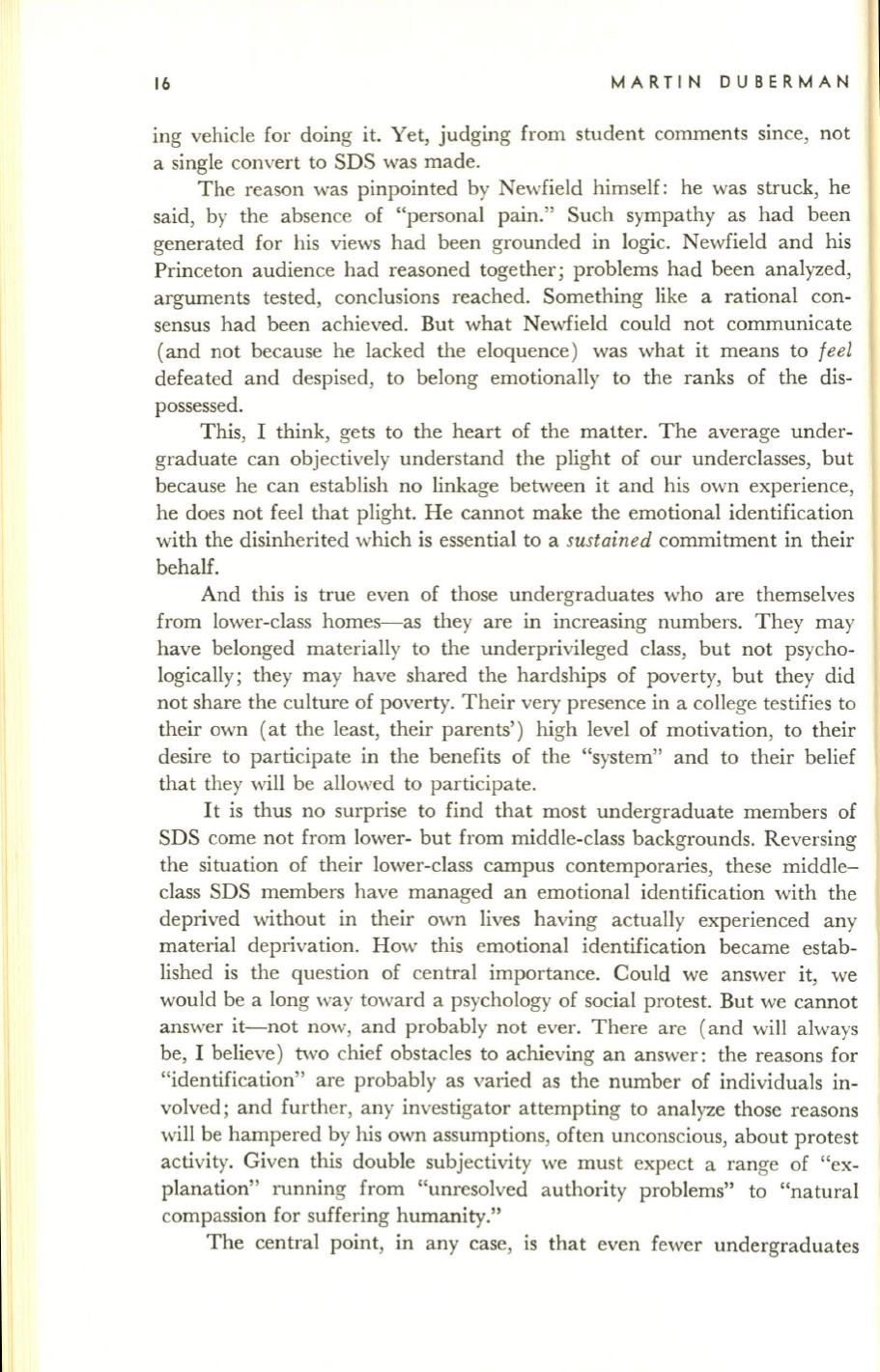
16
MARTIN DUBERMAN
ing vehicle for doing it. Yet, judging from student comments since, not
a single convert to SDS was made.
The reason was pinpointed by Newfield himself: he was struck, he
said, by the absence of "personal pain." Such sympathy as had been
generated for his views had been grounded in logic. Newfield and his
Princeton audience had reasoned together; problems had been analyzed,
arguments tested, conclusions reached. Something like a rational con–
sensus had been achieved. But what Newfield could not communicate
(and not because he lacked the eloquence) was what it means to
feel
defeated and despised, to belong emotionally to the ranks of the dis–
possessed.
This, I think, gets to the heart of the matter. The average under–
graduate can objectively understand the plight of our underclasses, but
because he can establish no linkage between it and his own experience,
he does not feel that plight. He cannot make the emotional identification
with the disinherited which is essential to a
sustained
commitment in their
behalf.
And this is true even of those undergraduates who are themselves
from lower-class homes-as they are in increasing numbers. They may
have belonged materially to the underprivileged class, but not psycho–
logically; they may have shared the hardships of poverty, but they did
not share the culture of poverty. Their very presence in a college testifies to
their own (at the least, their parents') high level of motivation, to their
desire to participate in the benefits of the "system" and to their belief
that they will be allowed to participate.
It is thus no surprise to find that most undergraduate members of
SDS come not from lower- but from middle-class backgrounds. Reversing
the situation of their lower-class campus contemporaries, these middle–
class SDS members have managed an emotional identification with the
deprived without in their own lives having actually experienced any
material deprivation. How this emotional identification became estab–
lished is the question of central importance. Could we answer it, we
would be a long way toward a psychology of social protest. But we cannot
answer it-not now, and probably not ever. There are (and will always
be, I believe) two chief obstacles to achieving an answer: the reasons for
"identification" are probably as varied as the number of individuals in–
volved; and further, any investigator attempting to analyze those reasons
will be hampered by his own assumptions, often unconscious, about protest
activity. Given this double subjectivity we must expect a range of "ex–
planation" running from "unresolved authority problems" to "natural
compassion for suffering humanity."
The central point, in any case, is that even fewer undergraduates


